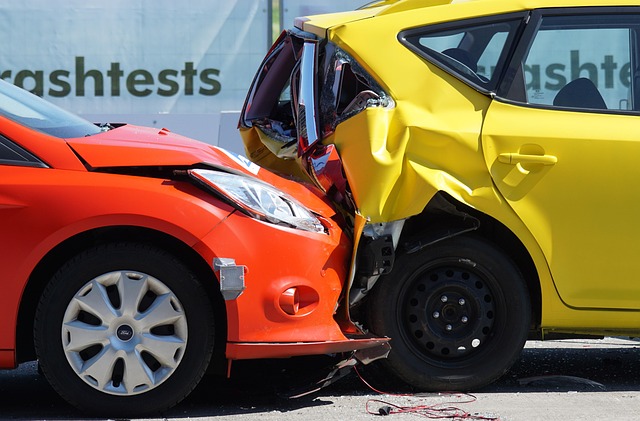Car insurance policies protect drivers and vehicles from financial losses due to accidents and unforeseen events, with key components including liability, collision, comprehensive, and personal injury protection (PIP) coverages. The three main types mitigate risks by covering medical expenses, property damage, vehicle repairs, theft, and natural disasters. A deductible is the out-of-pocket amount for claims, influencing premiums; choosing a higher deductible lowers costs but requires financial preparedness for repairs. Comprehensive coverage protects against various risks, including theft and natural disasters, while PIP and Medical Payments ensure individuals receive necessary medical care after accidents without financial burden. Selecting the best policy involves aligning coverage with driving habits, lifestyle, and risk factors, regularly reviewing needs, and comparing rates from multiple providers to secure competitive rates. Understanding exclusions and limitations is crucial for adequate protection.
“Unraveling the intricacies of car insurance policies is a crucial step towards securing your financial well-being on the road. This comprehensive guide navigates the diverse landscape of automotive coverage, empowering drivers with knowledge. From grasping the fundamentals to exploring specialized protections like liability, collision, and personal injury, each aspect matters. We’ll demystify terms like deductibles, exclusions, and rate comparisons, ensuring you make informed choices. Understanding car insurance isn’t just about compliance; it’s about peace of mind, knowing your vehicle and person are shielded from unforeseen events.”
Understanding the Basics of Car Insurance Policies

Car insurance policies are designed to protect drivers and their vehicles against financial loss in case of accidents or other unforeseen events. Understanding the basics of these policies is crucial for making informed decisions when choosing coverage. A standard car insurance policy typically includes liability, collision, comprehensive, and personal injury protection (PIP) or medical payments coverage.
Liability covers damages to others’ property or injuries they sustain due to your driving. Collision coverage pays for repairs or replacement of your vehicle if it’s damaged in an accident. Comprehensive insurance covers a wide range of non-collision losses like theft, vandalism, or natural disasters. PIP/Medical Payments ensures that you and your passengers receive medical care and compensation for related expenses after an accident, regardless of fault.
Types of Coverage: Liability, Collision, and Comprehensive

When navigating the world of car insurance, understanding the different coverage types is essential. These policies are designed to protect drivers from potential financial burdens resulting from accidents or vehicle damage. The three primary coverages include Liability, Collision, and Comprehensive.
Liability insurance covers damages caused by accidents where you’re at fault, protecting you from claims for medical expenses and property damage. Collision coverage pays for repairs or replacements when your car collides with another object or vehicle, regardless of who’s at fault. Comprehensive insurance, on the other hand, offers protection against a wide range of non-collision events like theft, vandalism, or natural disasters, ensuring peace of mind behind the wheel.
What is a Deductible and How Does it Affect Your Premiums?

A deductible, in simple terms, is the amount you agree to pay out-of-pocket for car insurance claims before your coverage kicks in. It’s a crucial component of your policy that significantly impacts your premiums. The higher the deductible you choose, the lower your car insurance premiums will be, as you’re essentially taking on more financial responsibility upfront. This makes sense from an insurer’s perspective; they calculate risks based on potential costs, and by setting a higher deductible, they assume there will be fewer claims or less severe ones, leading to more stable pricing.
However, it’s essential to balance this cost-saving measure with the reality of potential future repairs or accidents. If you opt for a high deductible, ensure that your emergency fund can cover unexpected expenses without causing significant financial strain. Otherwise, you might find yourself in a challenging situation when faced with a claim. Therefore, while a higher deductible can reduce premiums, it’s vital to consider your financial capacity and the potential risks involved in your daily driving.
Insuring Your Vehicle Against Damage and Theft

When it comes to car insurance, protecting your vehicle from damage and theft is a top priority for many drivers. Comprehensive coverage is designed to safeguard your car against a wide range of potential risks, from accidental collisions to natural disasters like floods or storms. This type of coverage can cover the cost of repairs or even replacement if your vehicle suffers significant damage that isn’t covered by basic liability insurance.
Additionally, theft protection is another crucial aspect of car insurance. While it might not be as common as other forms of coverage, it’s essential for drivers who want to safeguard their investment from being stolen. Many car insurance policies include specific provisions for theft protection, which can help recover the cost of a stolen vehicle or provide replacement if it can’t be recovered.
Protecting Yourself: Personal Injury Protection (PIP) and Medical Payments

Personal Injury Protection (PIP) and Medical Payments are integral components of comprehensive car insurance, offering crucial coverage for individuals involved in accidents. PIP is designed to protect policyholders by covering reasonable and necessary medical expenses incurred during a collision, regardless of fault. This ensures that those injured in an accident receive the care they need without facing financial strain.
Medical Payments, on the other hand, provide additional support by covering a wider range of healthcare-related costs, including hospital stays, doctor visits, and even funeral expenses. These provisions are essential for safeguarding your well-being and financial stability, offering peace of mind knowing that you’re protected in the event of an unexpected accident.
Choosing the Right Coverage for Your Driving Habits and Lifestyle

When selecting the ideal car insurance coverage, understanding your driving habits and lifestyle is key. Different activities come with unique risks – whether it’s navigating congested city streets or exploring remote countryside roads. Your choice should align with these factors for comprehensive protection. For instance, if you frequently drive in harsh weather conditions, opt for policies that cover weather-related incidents. Similarly, frequent long-distance travel might require additional coverage for roadside assistance and rental car benefits.
Your lifestyle also dictates the type of deductibles and limits you should consider. A higher deductible may be suitable for safe drivers with a solid financial cushion, as it lowers premiums. Conversely, those with less experience or riskier driving patterns might benefit from lower deductibles, albeit with slightly higher costs. Regularly reviewing your policy and adjusting it according to changing circumstances ensures you have the right balance of coverage tailored to your specific needs.
Common Exclusions and Limitations in Car Insurance Policies

Car insurance is designed to protect policyholders from financial loss in the event of an accident, but it’s essential to understand common exclusions and limitations within these policies. Many standard car insurance plans exclude certain high-risk activities or specific types of damage. For instance, racing your vehicle, using it for off-road adventures, or modifying it without proper permissions can lead to claims being denied. Additionally, natural disasters like floods or earthquakes are often not covered, unless you have purchased separate policies for these events.
Furthermore, certain types of damages and accidents may be subject to limitations. Policies typically specify maximum compensation amounts for medical expenses, property damage, or legal costs. They might also include restrictions on the type of vehicles or drivers covered. For example, some policies may exclude high-performance cars or young drivers with a clean driving record. Understanding these exclusions and limitations is crucial when deciding on car insurance to ensure you’re adequately protected in unforeseen circumstances.
Shopping for Car Insurance: Tips to Get the Best Rates

When shopping for car insurance, comparing rates from multiple providers is essential to getting the best deal. Start by gathering quotes from reputable companies, ensuring each provides a similar level of coverage. Don’t be tempted by low initial offers; instead, focus on comprehensiveness and reliability. Consider factors like deductibles, coverage limits, and additional perks offered.
Check reviews and ratings for each insurer to gauge their reputation and customer satisfaction. Review the policy details carefully, paying attention to exclusions and limitations. Negotiate with providers if you have a good driving record or specific safety features in your vehicle. Regularly reassess your insurance needs and shop around at least once a year to secure the most competitive rates for your Car Insurance.
